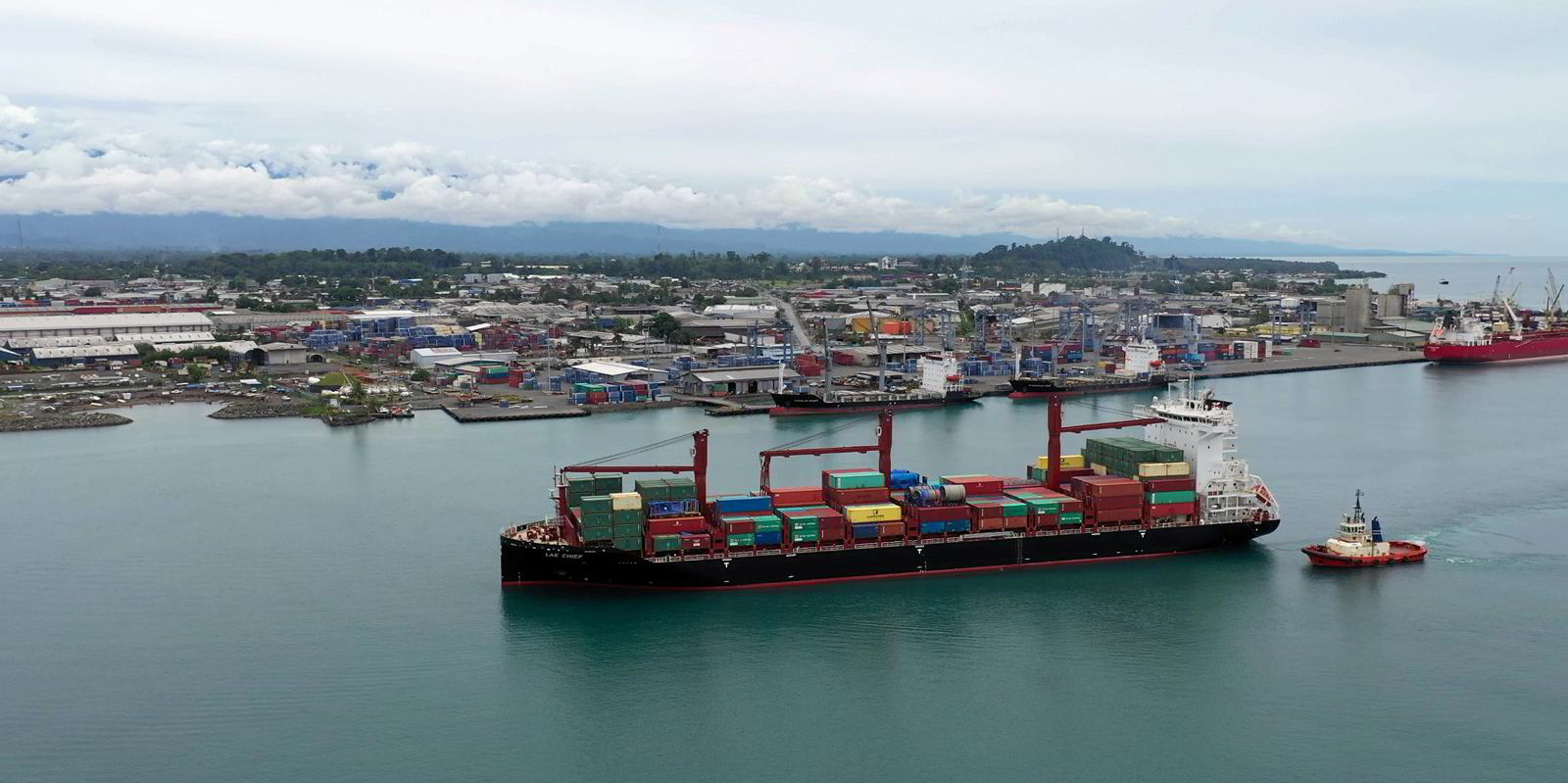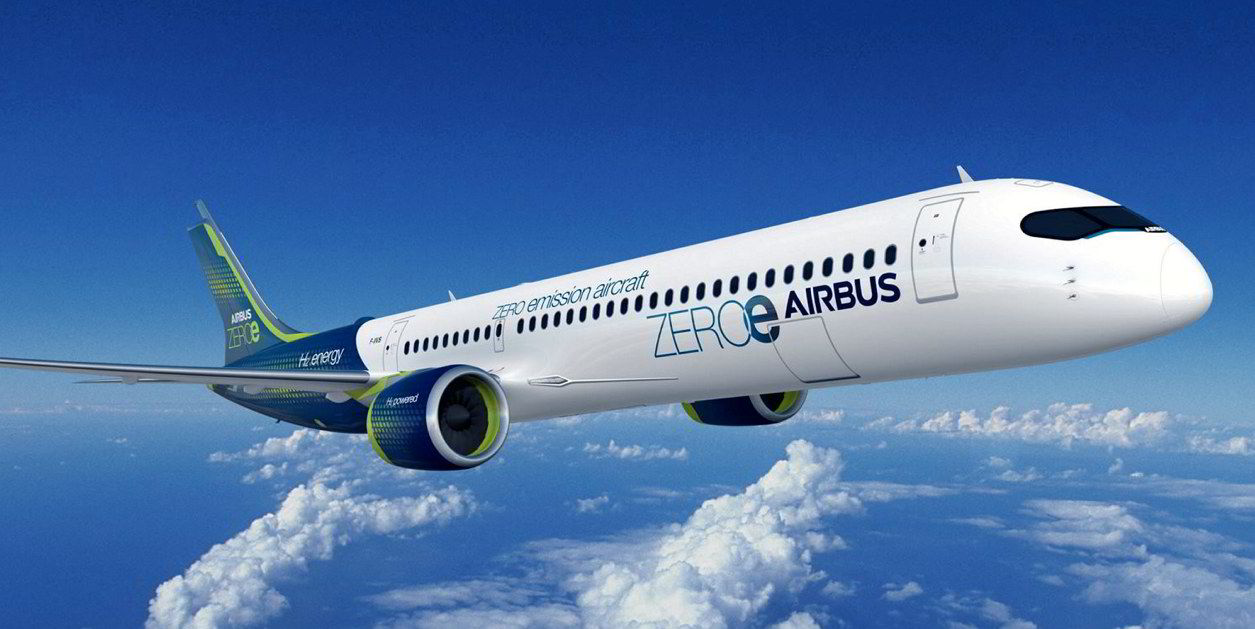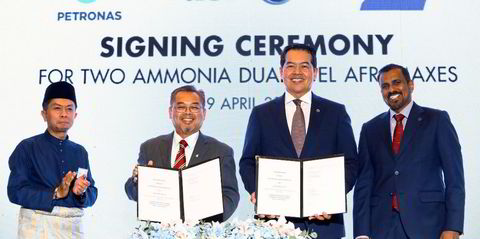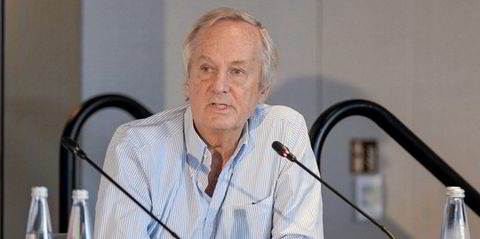Singapore-based Swire Shipping has set itself an ambitious target of reducing its greenhouse gas footprint to net zero, preferably well before 2050.
Cutting out emissions that cause global warming is required for its very existence.
"For the countries we serve in the South Pacific, global warming is not an existential problem. They are in danger of disappearing under water," managing director James Woodrow said at a recent conference in Singapore.

Swire Shipping has been working on improving its environmental impact for many years, said Simon Bennett, general manager for sustainable development for the shipping companies under Swire Group and China Navigation Co.
It has invested in a new fleet of efficient ships.
Bennett said the ships owned by Swire Shipping and Swire Bulk have all the technical and operational measures that are known and easy to install.
As an example, Swire Shipping installed 28,000 environmentally friendly LED tubes on the approximately 40 vessels that comprise its fleet. These lights are up to 80% more efficient than traditional lighting, such as fluorescent and incandescent bulbs, and will reduce CO2 emissions by as much as 10,000 tonnes within five years.
According to the company's latest sustainability report, various technical and operational measures resulted in $6.2m in fuel savings and the reduction of 38,446 tonnes of CO2 emissions during 2020.
The company continues to invest in new technologies and operational improvements that it expects will result in even lower fuel consumption and thus further emission reduction.

"This will get 40% of the reduction committed to reduce CO2 emissions by 50% by 2030 based on a 2018 baseline," Bennett said.
Any outstanding CO2 emissions can be offset through a programme set up with a network of partner projects aimed at reducing or preventing CO2 emissions, as well as building capacity and promoting the economy of local communities.
Swire Shipping is an active partner with leading decarbonisation centres and like-minded organisations including The Sustainable Shipping Initiative and the Getting To Zero Coalition, both at the knowledge-partner level and also to cooperate as a provider of commercial shipping testbeds where viable.
The company's longer-term goal is to operate a low or zero-carbon fleet by using alternative fuels.
Multiple fuel mix

Bennett said the current science points to green hydrogen, ammonia, and methanol once the technology, scalability, safety and training issues have been mitigated.
But he cautioned there is no one "silver bullet" at present.
"My personal belief is that we will move into a multi-fuel environment," Bennett said.
He explained that the fuel a ship will be designed to run on will most likely be determined by the availability of alternative fuel types in the geography in which it will operate.
"Some countries may be able to supply large quantities of biofuel, but not all countries can produce it. The South Pacific has some biomass produced by copra plantations, but we would only use sustainably grown biomass. We would not support chopping down a forest to make biomass," he said.
"Clean grids like Norway and New Zealand can produce methanol. It is available as brown methanol today but there are engines available that can progress from brown to blue to green."
Switching to an alternative fuel type will be relatively easy for ships that trade in one geographic area, or in fixed liner runs.
Bennett is concerned how this will play out in dry bulk.
"The problem with a multi-fuel environment is that tramping bulk carriers will find it difficult to find the fuel at all the ports they call at. They will be the last to change over," he said.
Bennett also stressed that shipowners must start early on the transition to alternative fuels.
"The advantage is that you can have the systems in place today. The solution is to have dual-fuel systems and slowly make the transition across as the alternative fuel becomes available," he said.
Designs for ships that do not take this into account will not be able to trade without major, expensive conversions, Bennett explained.
"If we stick with the IMO reduction of 50%, it means existing ships will have to be depreciated over the next 10 to 15 years," he concluded, referring to the International Maritime Organization's goal to cut shipping's greenhouse gas emissions by 2050.
"How many companies have adjusted their depreciation schedules to take this into account? Depreciation schedules need urgent revisiting now, when markets are good."






